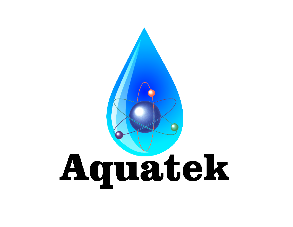Can we use the lake water to supply water to our house?
Q:
We live on a lake. Can we use the lake water to supply water to our house?
A:
Yes, in most cases, lake water can be used to supply water to your home or business. The water would have to tested to find out what is in the water, first. Proper testing of the water is the most important consideration because, the presence of bacteria can be high anytime water has an open contact with the environment. The are many factors which, can effect lake or ground water and testing will determine the best method of disinfection and processing of the water.
Drinking water supplies in the United States are among the safest in the world. However, even in the U.S., drinking water sources can become contaminated, causing sickness and disease from waterborne germs, such as Cryptosporidium, E. coli, Hepatitis A, Giardia intestinalis, and other pathogens.

Drinking water sources are subject to contamination and require appropriate treatment to remove disease-causing agents. Public drinking water systems use various methods of water treatment to provide safe drinking water for their communities. Today, the most common steps in water treatment used by community water systems (mainly surface water treatment) include:
Coagulation and Flocculation – Coagulation and flocculation are often the first steps in water treatment. Chemicals with a positive charge are added to the water. The positive charge of these chemicals neutralizes the negative charge of dirt and other dissolved particles in the water. When this occurs, the particles bind with the chemicals and form larger particles, called floc.
Sedimentation – During sedimentation, floc settles to the bottom of the water supply, due to its weight. This settling process is called sedimentation.
Filtration – Once the floc has settled to the bottom of the water supply, the clear water on top will pass through filters of varying compositions (sand, gravel, and charcoal) and pore sizes, in order to remove dissolved particles, such as dust, parasites, bacteria, viruses, and chemicals.
Disinfection – After the water has been filtered, a disinfectant (for example, chlorine, chloramine) may be added in order to kill any remaining parasites, bacteria, and viruses, and to protect the water from germs when it is piped to homes and businesses.
Water may be treated differently in different communities depending on the quality of the water that enters the treatment plant. Typically, surface water requires more treatment and filtration than ground water because lakes, rivers, and streams contain more sediment and pollutants and are more likely to be contaminated than ground water.
Some water supplies may also contain disinfection by-products, inorganic chemicals, organic chemicals, and radionuclides. Specialized methods for controlling formation or removing them can also be part of water treatment.
To learn more about the steps that are taken to make water safe to drink, visit the United States Environmental Protection Agency’s (EPA) Public Drinking Water Systems web page. To learn more about the 90+ contaminants EPA regulates and why, visit EPA’s Drinking Water Contaminants page.

It is always our goal to follow the procedures to disinfect and filter water based above national standards and always concentrate on purification beyond simply treating your water supply.
Even though EPA regulates and sets standards for public drinking water, many Americans use a home water treatment unit to:
Remove specific contaminants
Take extra precautions because a household member has a compromised immune system
Improve the taste of drinking water
Household water treatment systems are composed of two categories:
Point-of-use and point-of-entry.
Point-of-entry systems are typically installed after the water pump or entry point and treat most of the water entering a residence.
Point-of-use systems are systems that treat water in batches and deliver water to a tap, such as a kitchen or bathroom sink or an auxiliary faucet mounted next to a tap.
The most common types of household water treatment systems consist of:
Filtration Systems – A water filter is a device which removes impurities from water by means of a physical barrier, chemical, and/or biological process such as Reverse Osmosis filtration systems.
Water Softeners – A water softener is a device that reduces the hardness of the water. A water softener typically uses sodium or potassium ions to replace calcium and magnesium ions, the ions that create “hardness.”
Distillation Systems – Distillation is a process in which impure water is boiled and the steam is collected and condensed in a separate container, leaving many of the solid contaminants behind.
Disinfection – Disinfection is a physical or chemical process in which pathogenic microorganisms are deactivated or killed. Examples of chemical disinfectants are chlorine, chlorine dioxide, and ozone. Examples of physical disinfectants include ultraviolet light, electronic radiation, and heat.
If you would like to know more about how to use lake water as a source supply of water to your home or business, give us a call (772-538-0284) and we will discuss with you, the possibilities and steps needed to make sure your water will be safe to consume.
